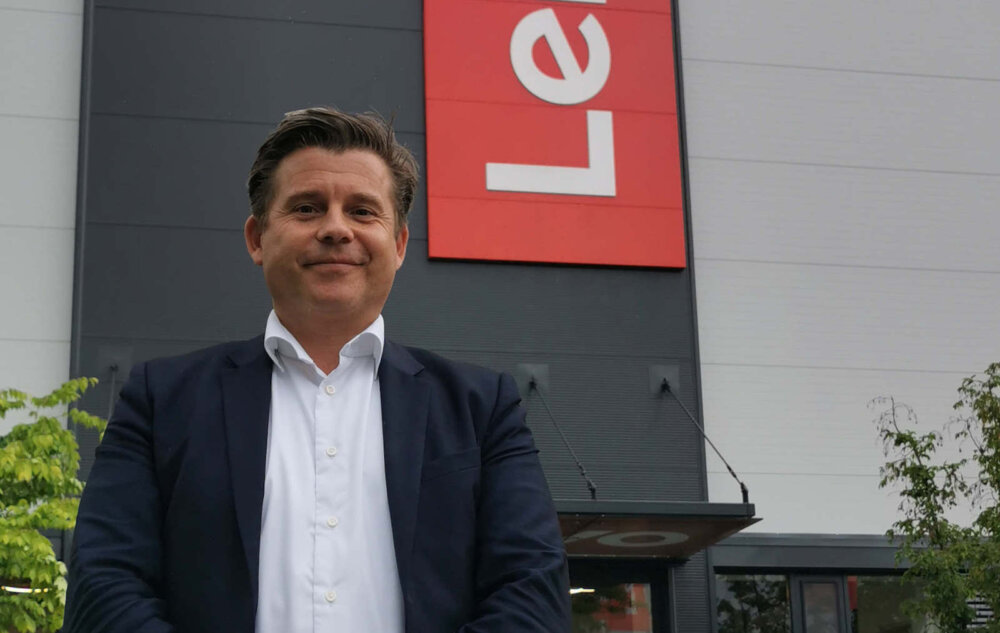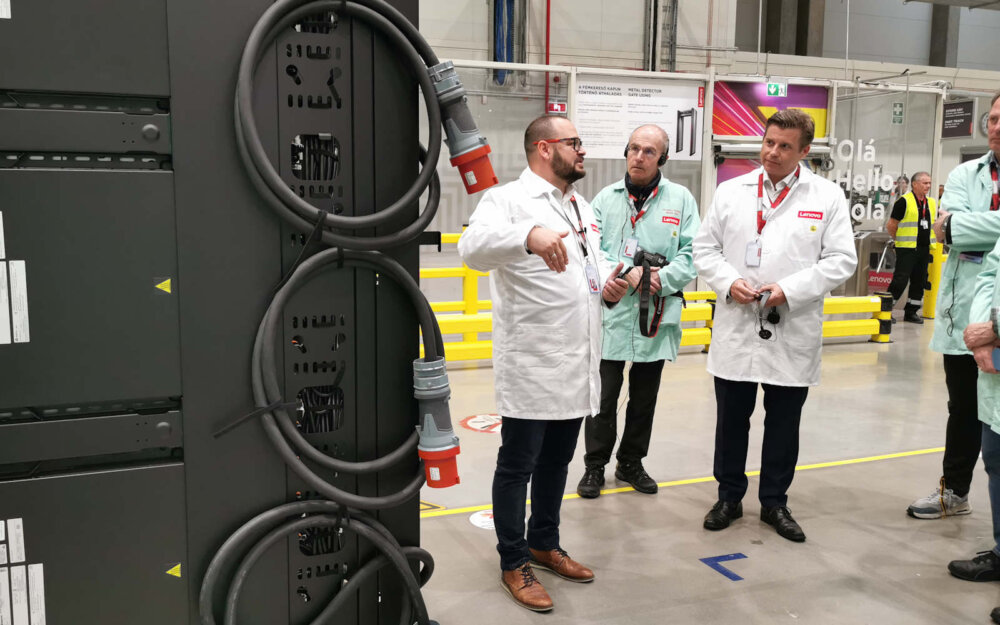
Why Lenovo’s customers want sustainable technology: youth, power bills and legislation
Our progress towards sustainable technology sometimes feels glacially slow, but it is happening. And it’s happening for three reasons. One: young people applying pressure. Two: if you reduce CO₂ demands, you also reduce electricity bills. Three: governments are finally legislating.
Or at least, that’s the view of Stefan Brechling Larsen, Lenovo’s Global Head of Environmental Services. As part of my recent visit to Lenovo’s Budapest factory, where it manufactures servers and workstations in a more sustainable way, I grabbed 20 minutes of his time to ask two key questions.
First, were Lenovo’s customers really asking for more sustainable technology? And if so, why?
European & young: two sustainable dynamics
In a move that could have gone badly wrong if he was easily offended, I asked Stefan if he’d risen to the giddy position of Global Head of Environmental Services because he was Danish. After all, it’s a country with a great reputation for being ethical.
“No, I don’t think it’s because I’m from Denmark,” he replies, with what I hope was an amused smile. “But it’s very clear that Europe, and especially the western part of Europe, is on the forefront [of sustainability]. First of all, the development of technology and solutions, but also the demand from both the governments and from the younger generation.”
This matters, he argues, because young people want to know that they’re joining an ethical company. And that has a knock-on effect in terms of what Lenovo’s customers are asking for.
“We really see now that our customers are saying, in order for them to be attractive to the young generation, they also need to have a sustainability strategy and vision and all of those factors, because the young generation really cares for that, right?”

The push to refurbished laptops, PCs and phones
It all sounds logical enough, but I point out to Stefan that he works for a huge electronics company that must keep on selling new products to survive. How does he square that circle?
“We actually put a lot of effort into refurbishing,” comes the reply. “For the last 15 years, we’ve also had an asset recovery service where we basically take back old units (or help our customers take them back) and to the best of our capability provide them with a second or even third lifecycle.”
The push to refurbish IT has become even stronger in the past few years, he says. “There is a constant new drive also from our customers towards refurbishment and to recertify products, and I think it’s going to grow even faster now.”
That’s in part due to EU legislation that has already been adopted in France, where 20% of all new purchases of computers and phones made by public bodies must be refurbished. And Stefan believes this strategy will extend to the rest of the world.
“I really think there’s going to be a brand new focus and perspective around the area called personas,” he says. “That means, do all employees always have to have a brand new PC, right? We are now starting to see our customers say, you know what, some of the units are perfect after their first lifecycle and if you refurbish and recertify them, they would work like almost a brand-new product. And for these persona types, it makes sense.”
Sustainable servers
At this point, Stefan points out of the window and to the factory opposite us. This, he explains, is a physical manifestation of Lenovo’s business division based around recertified servers, with “a growing interest from customers” for two key reasons.
“It’s a mixture of finance and sustainability for our customers,” says Stefan. In other words, they aren’t spending as much on a new server and it looks great on that annual ESG report. “When we look into the future of sustainability, those two things, once you hit both of them, that’s going to be a true benefit, right?”
He sees the same drivers behind the rising demand for Lenovo’s range of Neptune water-cooled servers.

“One of [the drivers], of course, is energy prices that were skyrocketing. And with the Neptune servers that are water-cooled, instead of air-cooled, they actually use 40% less power. Working in sustainability, I would love to say [they’re popular] because they save customers 40% on CO₂, but let’s be honest, there’s also financial benefit to them.”
There’s a secondary benefit too: you can use that now hot water to heat rooms elsewhere in your building. “That is when it really starts to build, that two plus two becomes more than just four.” I start to doubt Stefan’s mathematical skills when he goes further to claim that “it’s going to create a negative CO₂ impact” until he clarifies that he means a company is no longer spending money on heating and thus actively reducing its CO₂ emissions.
Small changes to big effect
We go on to talk about the other, small changes that will gradually add up – Stefan hopes – to Lenovo hitting its “net zero” target by 2050. In particular, the use of low-temperature soldering techniques, not only reduces the carbon footprint of each new product but should also mean they last longer.
I ask if we can expect to see workstations and servers become easier to slot into a circular economy, with reusable components at the fore. “I’m not sure about all the way down to components, I have to be honest, but I know that from a strategy point of view, yes, we’re definitely now building not only for the units to last for a second or third lifecycle but also the right to repair.”
Stefan says that he and his team are now being brought in “at the very early design phase”, right down to the location and number of screws needed to make repairs and refurbs easier.
Reasons for optimism
My final question: how optimistic is Stefan about the rise of sustainability?
“I’m actually very, very optimistic,” he replies, without hesitation. “And the reason being is that not only do I see there is a movement internally in [Lenovo], a big movement, but it’s really outside, from our customers.”
And this change has been both quick and notable. “So a very good example is whenever we were invited in [to a sales meeting] four years ago around sustainability, we got the last two minutes of the meeting. If there was time, right? Now, we’re actually almost always there at the very beginning of each meeting.”
There’s a reason for this, Stefan explains. “Now, when we speak with the customers, they all have a Net Zero strategy or a carbon reduction strategy, very tangible. They want to reduce 20% by the year so and so.”
As he has been throughout our interview, Stefan is realistic about companies’ motives. They’re not merely doing it because they love dolphins, but due to legislation, particularly in the EU. “The annual report now at the end of this year must include a sustainability report. So that’s also driving that. So yeah, I’m very optimistic.”
NEXT UP

Doris Yeung, Chief Financial Officer at Tradeteq: “Technology has significantly transformed how finance functions work”
We interview Doris Yeung, Chief Financial Officer at Tradeteq, a leading private debt and trade finance marketplace.

AWS plugs another $9 billion into Singapore and launches new AI program
AWS is showering Singapore with yet more AI investment, along with the promise of 12,300 jobs and a new program to boost AI uptake

Phil Robinson, Principal Security Consultant and Founder at Prism Infosec: “Ethical hackers serve as the frontline defence against cybercriminals”
We interview Phil Robinson, Principal Security Consultant and Founder at Prism Infosec, who shares his views on ethical hackers and the latest ransomware trends.